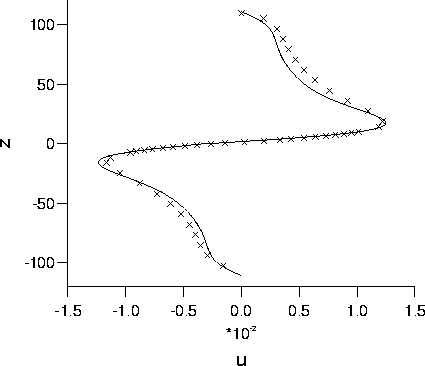
Figure 7-39: The horizontal velocity u as a function of z for wave (1) with
The velocities found from the four waves are compared with the theoretical expressions, equations (6.55), (6.56), (6.57) and (6.58), in figures 7-39 - 7-46 where the horizontal

Figure 7-39: The horizontal velocity u as a function of z for
wave (1) with ![]() ,
, ![]() ,
,
![]() and f = 1.4 at
and f = 1.4 at ![]() .
The solid line is the theoretical curve.
.
The solid line is the theoretical curve.
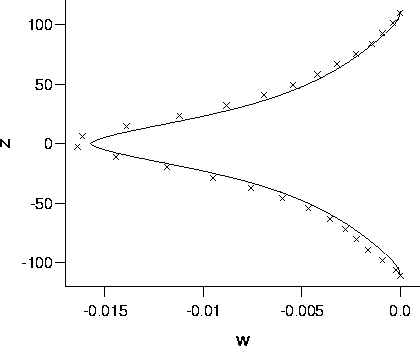
Figure 7-40: The vertical velocity w as a function of z for
wave (1) with ![]() ,
, ![]() ,
,
![]() and f = 1.4 at
and f = 1.4 at ![]() .
The solid line is the theoretical curve.
.
The solid line is the theoretical curve.
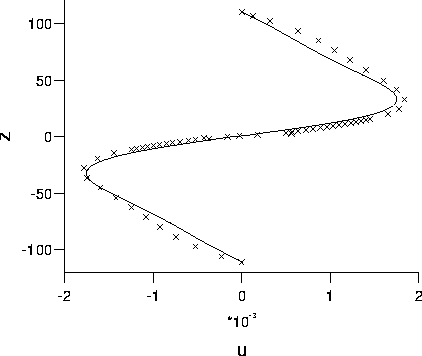
Figure 7-41: The horizontal velocity u as a function of z for
wave (2) with ![]() ,
, ![]() ,
,
![]() and f = 1.05 at
and f = 1.05 at ![]() .
The solid line is the theoretical curve.
.
The solid line is the theoretical curve.
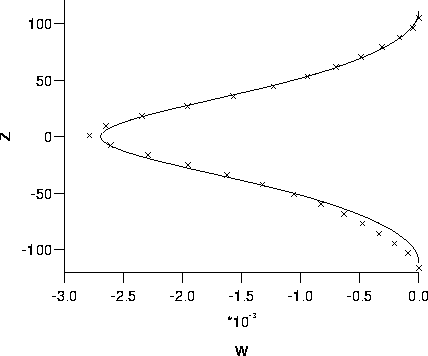
Figure 7-42: The vertical velocity w as a function of z for
wave (2) with ![]() ,
, ![]() ,
,
![]() and f = 1.05 at
and f = 1.05 at ![]() .
The solid line is the theoretical curve.
.
The solid line is the theoretical curve.
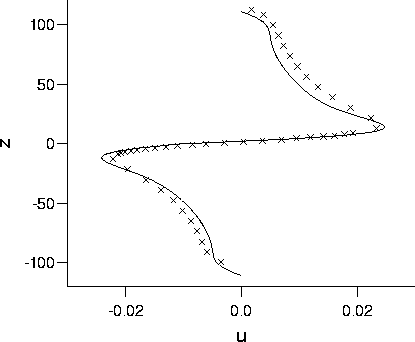
Figure 7-43: The horizontal velocity u as a function of z for
wave (3) with ![]() ,
, ![]() ,
,
![]() and f = 1.86 at
and f = 1.86 at ![]() .
The solid line is the theoretical curve.
.
The solid line is the theoretical curve.
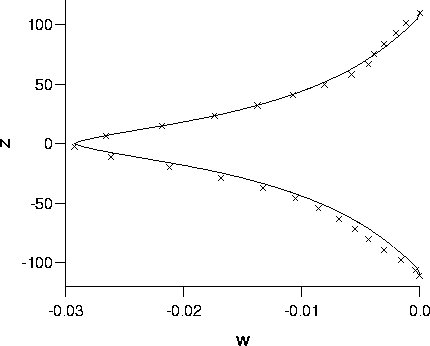
Figure 7-44: The vertical velocity w as a function of z for
wave (3) with ![]() ,
, ![]() ,
,
![]() and f = 1.86 at
and f = 1.86 at ![]() .
The solid line is the theoretical curve.
.
The solid line is the theoretical curve.
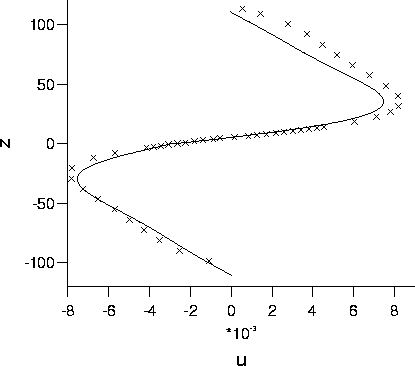
Figure 7-45: The horizontal velocity u as a function of z for
wave (4) with ![]() ,
, ![]() ,
,
![]() and f = 1.4 at
and f = 1.4 at ![]() .
The solid line is the theoretical curve.
.
The solid line is the theoretical curve.
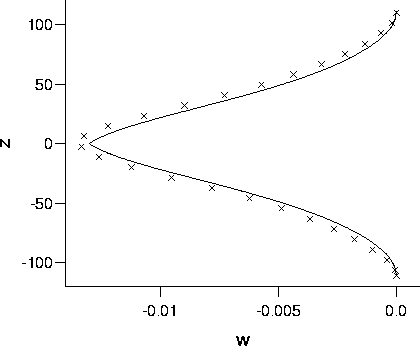
Figure 7-46: The vertical velocity w as a function of z for
wave (4) with ![]() ,
, ![]() ,
,
![]() and f = 1.4 at
and f = 1.4 at ![]() .
The solid line is the theoretical curve.
.
The solid line is the theoretical curve.
velocity is measured
at ![]() , t = T/4 and the vertical velocity at
, t = T/4 and the vertical velocity at
![]() , t = T/4. This is where the magnitudes of the
velocities are maximum.
The solid lines are the theoretical values and the markers are the simulation
results. For each wave there is a good agreement for both the magnitude and
the shape of the velocity distributions. The poorest fit is for the
horizontal velocity in wave (4) where the viscosity is at its largest. Despite
the large viscosity
, t = T/4. This is where the magnitudes of the
velocities are maximum.
The solid lines are the theoretical values and the markers are the simulation
results. For each wave there is a good agreement for both the magnitude and
the shape of the velocity distributions. The poorest fit is for the
horizontal velocity in wave (4) where the viscosity is at its largest. Despite
the large viscosity ![]() in equation (6.46) is 0.05 which is
still small so the theory should be applicable. The fit is good everywhere
except outside the viscous interface region in the upper fluid.
At its worst the discrepancy is about
in equation (6.46) is 0.05 which is
still small so the theory should be applicable. The fit is good everywhere
except outside the viscous interface region in the upper fluid.
At its worst the discrepancy is about ![]() , about 25%,
however the difference is generally much smaller, only a few percent.
As predicted in section 6.3.2 the
viscosity has little affect on the shape of the vertical velocity distribution,
the shape of the graphs in figures 7-40, 7-42,
7-44 and 7-46 all being similar. The difference in
the velocity magnitude is due mainly to the different values of
, about 25%,
however the difference is generally much smaller, only a few percent.
As predicted in section 6.3.2 the
viscosity has little affect on the shape of the vertical velocity distribution,
the shape of the graphs in figures 7-40, 7-42,
7-44 and 7-46 all being similar. The difference in
the velocity magnitude is due mainly to the different values of
![]() as would be the case for
inviscid waves. The effect of the viscosity is much more evident in the
horizontal velocity profiles shown in figures 7-39, 7-41,
7-43 and 7-45. Waves (1) and (3) both show a definite
boundary layer, in both fluids, in the region of the solid boundary
( at
as would be the case for
inviscid waves. The effect of the viscosity is much more evident in the
horizontal velocity profiles shown in figures 7-39, 7-41,
7-43 and 7-45. Waves (1) and (3) both show a definite
boundary layer, in both fluids, in the region of the solid boundary
( at ![]() ). The influence of the boundary layer is only obvious
within about 10 lattice units of the boundary. Waves (2)
and (4) both have very low velocities close to the boundary and
there is no noticeable change in the velocity profile. At the interface
(z = 0) the effect of the viscosity can be seen readily in each of the
waves. The magnitude of the horizontal velocity peaks some distance
from the interface and then decreases steadily to zero at the interface.
The distance of the peak from the interface is
). The influence of the boundary layer is only obvious
within about 10 lattice units of the boundary. Waves (2)
and (4) both have very low velocities close to the boundary and
there is no noticeable change in the velocity profile. At the interface
(z = 0) the effect of the viscosity can be seen readily in each of the
waves. The magnitude of the horizontal velocity peaks some distance
from the interface and then decreases steadily to zero at the interface.
The distance of the peak from the interface is ![]() lu for
waves (1) and (3) and
lu for
waves (1) and (3) and ![]() lattice units for waves (2) and (4). This is
consistent with the values of
lattice units for waves (2) and (4). This is
consistent with the values of ![]() : 7, 15, 5 and 16
given in table 7-1. For waves (1) and (3)
: 7, 15, 5 and 16
given in table 7-1. For waves (1) and (3) ![]() has a similar value, about a third of the value for waves (2) and (4). Twice
this distance from the boundary the magnitude of the
irrotational velocity will be reduced a factor of
has a similar value, about a third of the value for waves (2) and (4). Twice
this distance from the boundary the magnitude of the
irrotational velocity will be reduced a factor of ![]() to about 14%
of its value at the interface/boundary and its effect will become
negligible at greater distances.
to about 14%
of its value at the interface/boundary and its effect will become
negligible at greater distances.
The results in figures 7-47 and 7-48
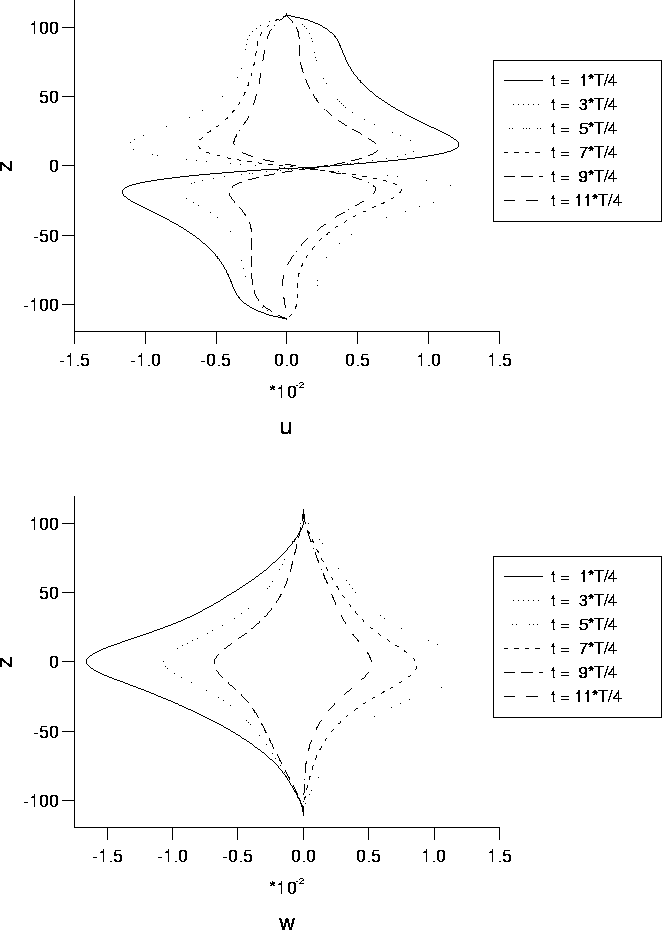
Figure 7-48: The vertical velocity w as a function of
z for
wave (1) at ![]() and at multiples of T/4.
and at multiples of T/4.
Figure 7-47: The horizontal velocity u as a function of
z for
wave (1) at ![]() and at multiples of T/4.
and at multiples of T/4.
show the horizontal and the vertical velocity profile respectively at
times ![]() , 3T/4, 5T/4, 7T/4, 9T/4 and 11T/4 for wave (1).
The horizontal velocity is shown at
, 3T/4, 5T/4, 7T/4, 9T/4 and 11T/4 for wave (1).
The horizontal velocity is shown at ![]() and the vertical
velocity at
and the vertical
velocity at ![]() . The decrease in both the horizontal and the
vertical velocity with time can be seen over the three periods of oscillation.
This is expected at the rate
. The decrease in both the horizontal and the
vertical velocity with time can be seen over the three periods of oscillation.
This is expected at the rate ![]() since this is the rate
at which a, the interface amplitude, is decaying and the velocities
are proportional to a. There is also a lack of symmetry about z = 0
which is particularly obvious in the horizontal velocity, see figure
7-47. This is expected since the ratio of the irrotational
velocities C1/C2 is 1.4 here.
since this is the rate
at which a, the interface amplitude, is decaying and the velocities
are proportional to a. There is also a lack of symmetry about z = 0
which is particularly obvious in the horizontal velocity, see figure
7-47. This is expected since the ratio of the irrotational
velocities C1/C2 is 1.4 here.